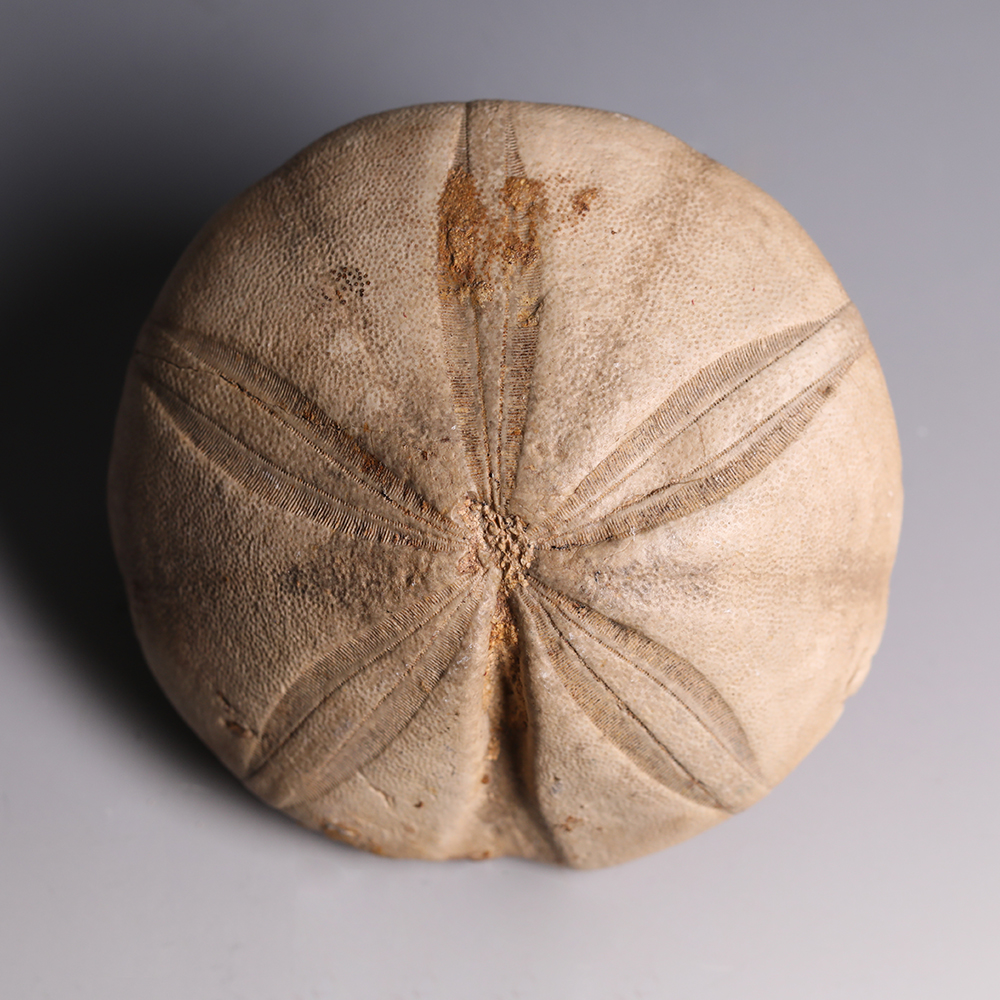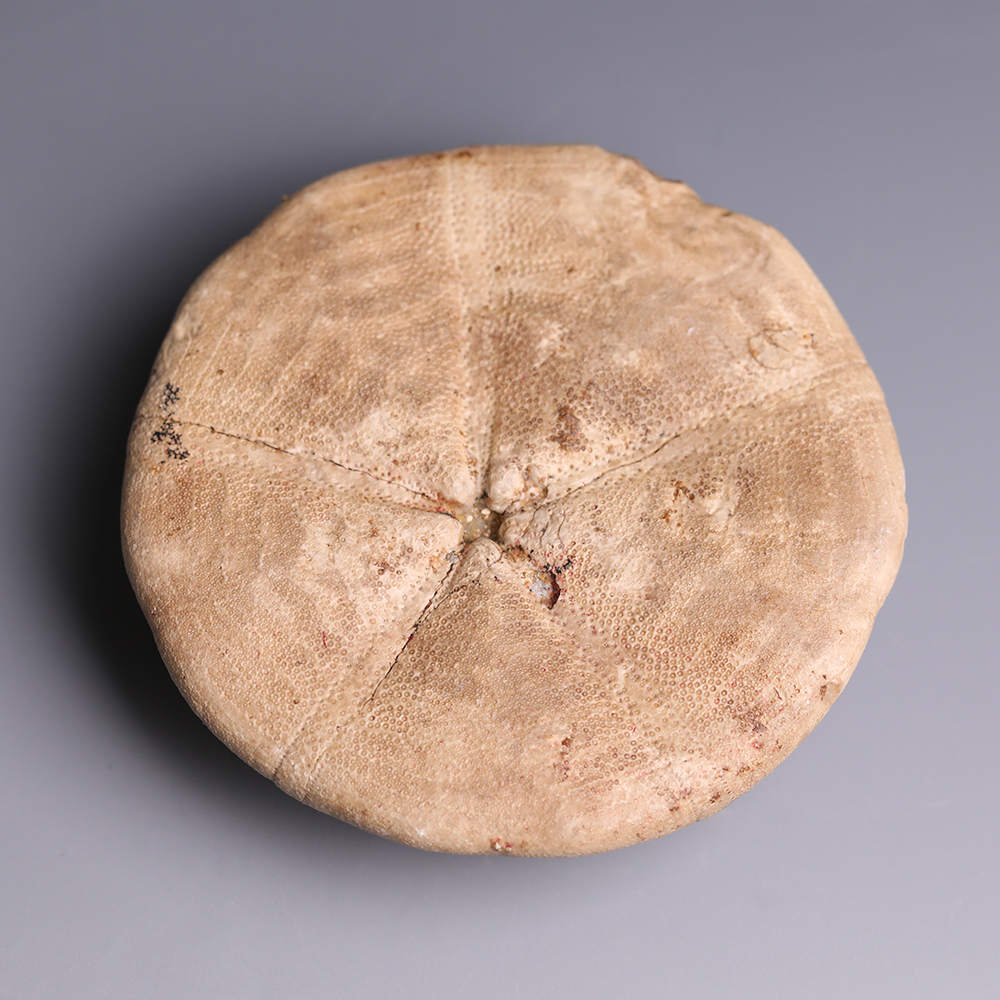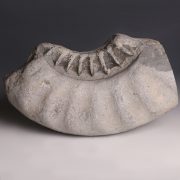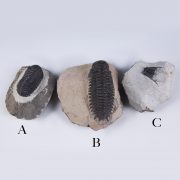The oldest echinoids are around 450 million years old, from the Ordovician period of the Paleozoic Era which was 220 million years before dinosaurs started appearing. Echinoids still exist today and continue to diversify living among shallow coastal waters across the world. The roots of modern sea urchins can be traced back around 250 million years ago to the Permian period of the Paleozoic Era. The animal consisted of a hard shell, referred to as a test, with spines protruding out from the small knobs, known as tubercles. The primary function of the test was to protect and support the soft body with the spines protecting against predators. Rarely the spines and tests are fossilised together, it is common to find fossilised spines broken away from the knobs.



